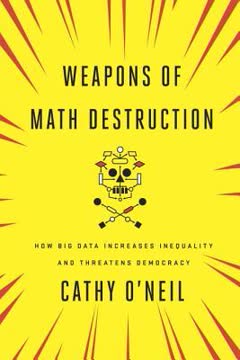Key Takeaways
1. Understand investing fundamentals before diving in
"Who among us wants to lose money? Of course you don't!"
Risk and return trade-off. Investing involves balancing risk and potential returns. Higher-risk investments like stocks generally offer higher long-term returns but with more short-term volatility. Lower-risk options like bonds provide more stability but lower growth potential. Understanding this relationship is crucial for making informed investment decisions.
Types of investments:
- Ownership investments: Stocks, real estate, small businesses
- Lending investments: Bonds, savings accounts, certificates of deposit
Key investing concepts:
- Diversification: Spreading investments across different asset classes to reduce risk
- Asset allocation: Determining the right mix of investments based on your goals and risk tolerance
- Compound interest: Earning returns on your initial investment and previous returns
2. Prioritize high-cost debt repayment and emergency savings
"Paying off high-cost consumer debt can undermine your ability to save toward your goals and your ability to make major purchases in the future."
Tackle high-interest debt first. Prioritize paying off high-interest consumer debt, such as credit card balances, before focusing on investing. The interest saved by eliminating this debt often outweighs potential investment returns.
Build an emergency fund. Establish a cash reserve of 3-6 months' living expenses in a readily accessible account. This financial cushion helps you avoid taking on high-interest debt when unexpected expenses arise and provides peace of mind.
- Emergency fund targets:
- 3 months: Stable job, other sources of support
- 6 months: Less stable income or job market
- 12 months: Highly variable income or difficult job market
3. Diversify investments across stocks, bonds, and real estate
"Not all your money rides in one stock fund and with one fund manager."
Spread risk through diversification. Allocate your investments across different asset classes to reduce overall portfolio risk. This strategy helps protect against significant losses if one particular investment or sector underperforms.
Asset allocation guidelines:
- Stocks: Higher growth potential, higher risk
- Bonds: Income generation, lower risk
- Real estate: Potential for appreciation and rental income
Factors affecting allocation:
- Age: Generally, decrease stock allocation as you approach retirement
- Risk tolerance: Adjust based on your comfort with market volatility
- Financial goals: Align investments with short-term and long-term objectives
4. Maximize tax-advantaged retirement accounts
"Not investing in tax-sheltered retirement accounts can cost you hundreds, perhaps thousands, of dollars per year in lost tax savings."
Leverage tax benefits. Prioritize contributions to tax-advantaged retirement accounts like 401(k)s and IRAs. These accounts offer valuable tax benefits that can significantly boost your long-term returns.
Types of retirement accounts:
- Traditional 401(k) and IRA: Tax-deductible contributions, tax-deferred growth
- Roth 401(k) and IRA: After-tax contributions, tax-free withdrawals in retirement
- SEP-IRA and Solo 401(k): Higher contribution limits for self-employed individuals
Key considerations:
- Employer matching: Always contribute enough to maximize any employer match
- Contribution limits: Stay aware of annual limits and catch-up contributions for those 50+
- Required Minimum Distributions (RMDs): Plan for mandatory withdrawals starting at age 72
5. Choose low-cost index funds for long-term growth
"Over ten years or more, index funds typically outperform about three quarters of their peers."
Embrace passive investing. Low-cost index funds offer a simple, effective way to invest in broad market segments. These funds typically outperform actively managed funds over the long term due to lower fees and broader diversification.
Benefits of index funds:
- Lower costs: Minimal management fees and lower turnover
- Broad diversification: Exposure to entire market segments
- Tax efficiency: Less frequent trading leads to fewer taxable events
Recommended index fund types:
- Total stock market funds
- S&P 500 funds
- International stock funds
- Bond market funds
6. Consider real estate for wealth building and diversification
"Most people who make money investing in real estate do so because they invest in and hold property over many years."
Long-term approach to real estate. Real estate can be a powerful wealth-building tool when approached with a long-term perspective. It offers potential for appreciation, rental income, and tax benefits.
Real estate investment options:
- Primary residence: Build equity while meeting housing needs
- Rental properties: Generate ongoing income and long-term appreciation
- Real Estate Investment Trusts (REITs): Invest in real estate without direct property management
Key considerations:
- Location: Research local economic trends and job markets
- Financing: Understand mortgage options and leverage
- Property management: Factor in ongoing maintenance and tenant management costs
7. Explore entrepreneurship as a powerful investment option
"Ideas are a dime a dozen. I'd love to see you turn your best ideas into reality."
Invest in yourself. Starting a business can be one of the most rewarding and potentially lucrative investments. It allows you to leverage your skills, passion, and creativity while building long-term wealth.
Steps to entrepreneurship:
- Develop a business plan
- Assess your financial readiness
- Research market opportunities
- Start small and bootstrap if possible
- Seek mentorship and education
Key considerations:
- Risk tolerance: Be prepared for potential financial setbacks
- Time commitment: Entrepreneurship often requires significant time and energy
- Skill development: Continuously learn and adapt to market changes
Last updated:
FAQ
What's Investing in Your 20s & 30s For Dummies about?
- Comprehensive Guide: The book is a practical guide for young adults, focusing on building wealth through various investment strategies.
- Long-Term Growth Focus: It emphasizes starting early and investing consistently to benefit from compound growth over time.
- Risk Management: Eric Tyson discusses diversification and balancing aggressive and conservative strategies to manage risks effectively.
Why should I read Investing in Your 20s & 30s For Dummies?
- Tailored for Young Adults: Specifically designed for individuals in their 20s and 30s, addressing unique financial situations and challenges.
- Easy-to-Understand Language: Uses straightforward language and practical tips, making complex financial concepts accessible to beginners.
- Proven Strategies: Outlines time-tested investment strategies that can lead to financial independence and help avoid common pitfalls.
What are the key takeaways of Investing in Your 20s & 30s For Dummies?
- Start Early: Emphasizes the importance of starting to save and invest as soon as possible, recommending saving 5% to 10% of your income regularly.
- Diversification: Stresses the need for a diversified investment portfolio to reduce risk, including a mix of stocks, bonds, and other assets.
- Avoid Emotional Decisions: Advises against making investment decisions based on emotions or market hype, focusing instead on long-term goals.
What are the best quotes from Investing in Your 20s & 30s For Dummies and what do they mean?
- "Your own personal comfort matters.": Highlights the importance of choosing investments that align with your comfort level and financial goals.
- "Costs matter.": Emphasizes the impact of fees and commissions on investment returns, suggesting that lowering costs can enhance performance.
- "Think long-term.": Encourages maintaining a long-term perspective when investing, especially in volatile markets, to achieve financial goals.
What types of investments are covered in Investing in Your 20s & 30s For Dummies?
- Ownership Investments: Discusses stocks, real estate, and small businesses as options with significant growth potential but increased risk.
- Lending Investments: Covers bonds and money market funds, which are generally safer but offer lower returns, suitable for stability and income.
- Mutual Funds and ETFs: Explains how these provide diversification and professional management, ideal for beginners wanting broad asset exposure.
How can I set my investment goals using Investing in Your 20s & 30s For Dummies?
- Identify Goals: Encourages distinguishing between short-term and long-term goals to create a focused investment strategy.
- Prioritize Goals: Advises prioritizing financial goals based on current situations and future aspirations to guide investment decisions.
- Use SMART Criteria: Suggests using Specific, Measurable, Achievable, Relevant, Time-bound criteria to define goals clearly and track progress.
How does Investing in Your 20s & 30s For Dummies address risk management?
- Assess Risk Tolerance: Encourages assessing risk tolerance before making investment decisions to build a suitable portfolio.
- Diversification Strategy: Discusses diversification as a key method for managing risk by spreading investments across different asset classes.
- Avoid Market Timing: Warns against trying to time the market, suggesting a consistent investment approach to mitigate volatility risks.
What investment strategies does Eric Tyson recommend in Investing in Your 20s & 30s For Dummies?
- Regular Contributions: Advocates for making regular contributions to investment accounts, regardless of market conditions, to build wealth over time.
- Diversification Across Asset Classes: Recommends diversifying investments across various asset classes to spread risk and improve performance.
- Long-Term Focus: Emphasizes maintaining a long-term perspective, advising against reacting to short-term market fluctuations.
How can I start investing if I’m a beginner according to Investing in Your 20s & 30s For Dummies?
- Educate Yourself: Stresses the importance of understanding basic investing concepts to build confidence as an investor.
- Start with Low-Cost Funds: Recommends beginning with low-cost index funds or ETFs for diversification and lower fees.
- Set Up Automatic Contributions: Suggests setting up automatic contributions to ensure consistent saving and investing over time.
What are the common mistakes to avoid when investing, as outlined in Investing in Your 20s & 30s For Dummies?
- Chasing High Returns: Warns against the temptation to chase high returns, which can lead to poor investment choices.
- Neglecting Research: Emphasizes the importance of conducting thorough research before making investment decisions.
- Overreacting to Market Fluctuations: Advises against making impulsive decisions based on short-term market movements.
How does Investing in Your 20s & 30s For Dummies suggest handling market downturns?
- View Downturns as Opportunities: Encourages seeing downturns as opportunities to buy quality investments at lower prices.
- Maintain a Long-Term Perspective: Stresses the importance of maintaining a long-term perspective and avoiding panic selling.
- Continue Regular Contributions: Recommends continuing regular contributions to take advantage of lower prices and dollar-cost averaging.
How can I minimize taxes when investing according to Investing in Your 20s & 30s For Dummies?
- Utilize Tax-Advantaged Accounts: Recommends using retirement accounts like 401(k)s and IRAs for tax benefits and tax-deferred growth.
- Consider Tax-Efficient Investments: Suggests investing in tax-efficient funds, such as index funds or tax-free municipal bonds, to minimize liabilities.
- Plan for Capital Gains: Advises being strategic about when to sell investments to manage capital gains taxes, holding for over a year for lower rates.
Review Summary
Investing in Your 20s & 30s For Dummies receives mixed reviews, with an average rating of 3.66/5. Readers appreciate its comprehensive overview of investing basics, clear explanations, and valuable advice for beginners. Many find it helpful for understanding various investment options and financial concepts. However, some criticize its focus on U.S. markets, repetitive content, and conservative approach. The book is praised for its accessibility and wealth of information, but some readers desire more in-depth explanations and practical guidance. Overall, it's considered a solid starting point for young investors.
Similar Books








Download PDF
Download EPUB
.epub digital book format is ideal for reading ebooks on phones, tablets, and e-readers.








